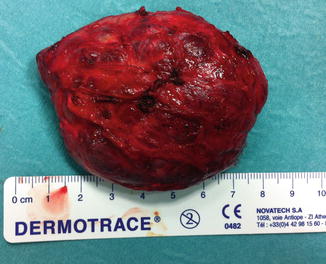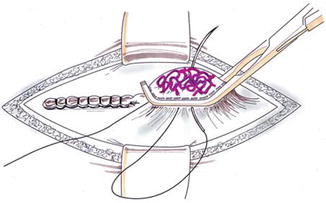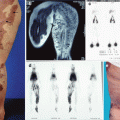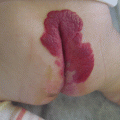Fig. 31.1
Surgical removal of a venous limited malformation of the calf. Complete removal “en bloc” was possible because the mass was well delimited
Resection of abnormal vessels which communicate a main artery with a main vein, eliminating an arteriovenous malformation (Figs. 31.3 and 31.4). This procedure is the ideal, curative operation of an A-V fistula [10]. However, it is rarely possible because much more common is the fistula were connections between artery and vein happen through a fistulous “nidus.” In this case, the former procedure is required.
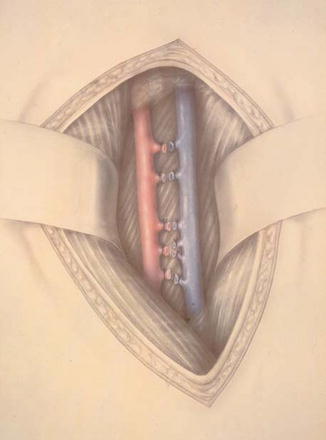
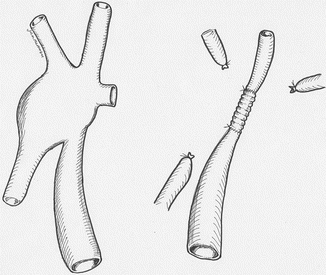

Fig. 31.3
Resection of direct A-V communications

Fig. 31.4
Removal of a direct A-V fistula with prosthetic reconstruction of the artery and vein ligation
Removal of abnormal vessels. This procedure is performed mainly to remove abnormal veins, like marginal vein, sciatic vein, or superficial, dilated dysplastic veins (Fig. 31.5). Operation can be not always easy, as these vessels may be sometimes very fragile, with a high tendency to bleed, or have very large perforators in the limbs, which should be recognized before surgery and cautiously ligated to avoid bleeding. Very often in addition, small A-V fistulas are present which should be ligated.
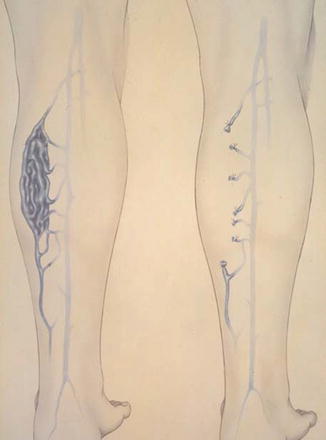

Fig. 31.5
Resection of superficial abnormal veins
2.
Revascularization techniques: operations to correct conditions of a reduced or altered blood flow due to the malformation. This group includes:
Resection of a stenosis or of an aneurysm and direct vascular surgical reconstruction of the vessel (Fig. 31.6).
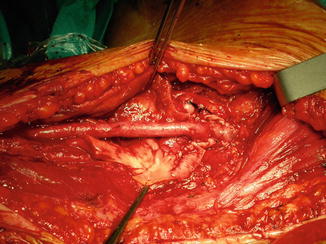
Fig. 31.6
Replacement of a congenital femoral artery aneurysm by a saphenous vein prosthesis
Bypass techniques in case of aplasia or hypoplasia of main vessels.
Reconstructive plastic of venous aneurysms, like a tangential resection of the aneurysmatic vein with reconstruction to a normal diameter of the vessel [11].
Patch plastic in main arteries or in venous stenosis.
Prosthetic replacement of congenital aneurysms of arteries or veins. Prosthetic material selection is crucial, according to the case. Synthetic material, like Dacron or PTFE, is implantable in arteries of adults. In veins, the first option is authologous veins, like saphenous vein. In case of unavailability, other material for vein replacement can be biological grafts, like homograft (limited availability: only in vessel banks) or umbilical vein graft. A main problem could be an artery replacement by a graft in a child, like in the rare case of an aortic aneurysm.
Vein valves reconstruction in case of valve dysplasia or aplasia (for more details, see Chap. 48).
3.
Get Clinical Tree app for offline access

Hemodynamic techniques: operations to reduce the hemodynamic effect of a malformation in cases where radical surgery is impossible. These procedures are usually required in infiltrating extratruncular forms. Some technical skills are effective:
Tangential clamping of a part of the mass by a Satinsky clamp and suture of the basis below the clamped area, in order to exclude all clamped part of the mass, which is resected after the Blalock suture (Fig. 31.7). During the same operation, the procedure can be repeated in order to increase the quantity of excluded/removed malformed mass [12].

